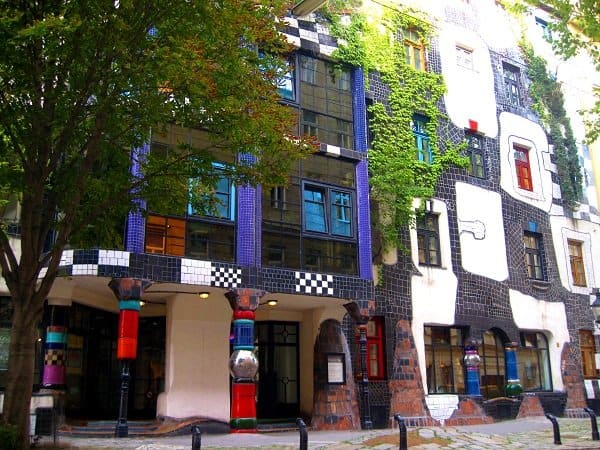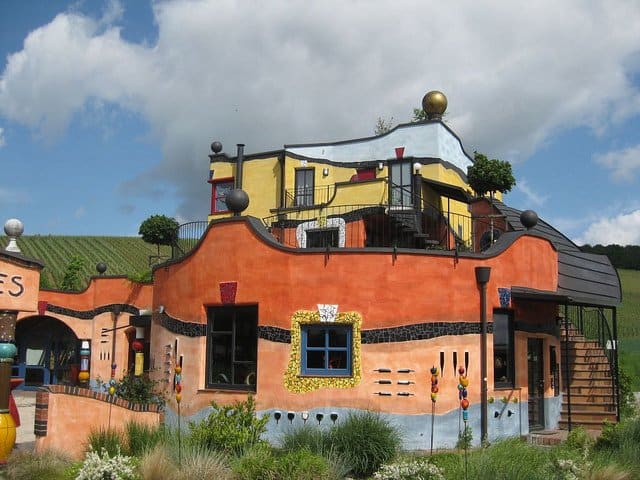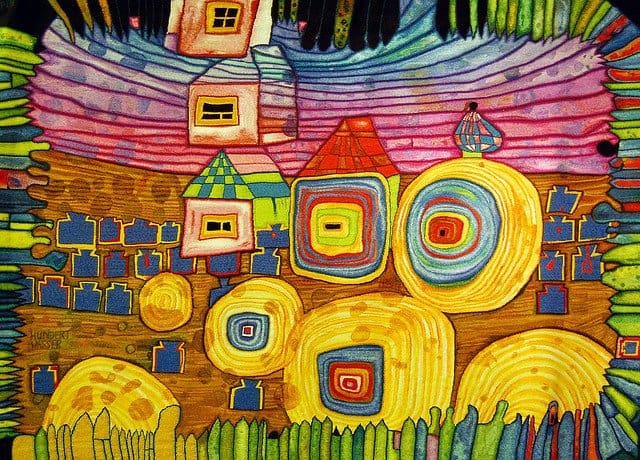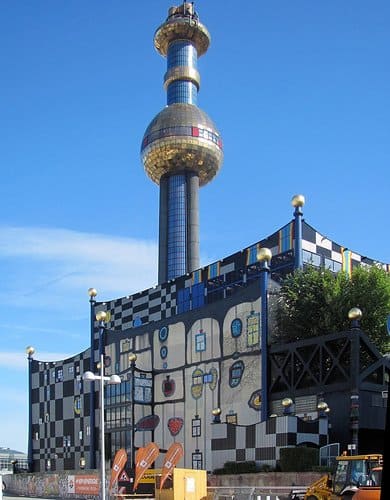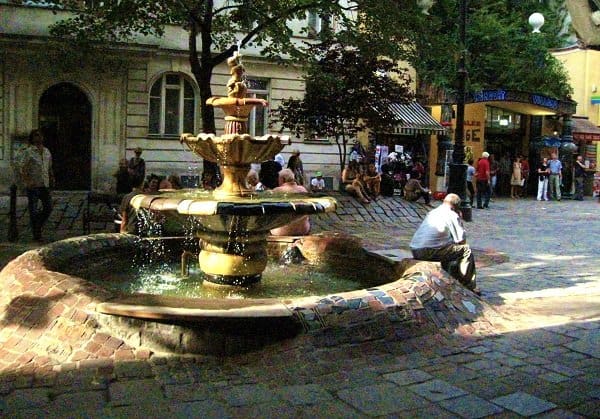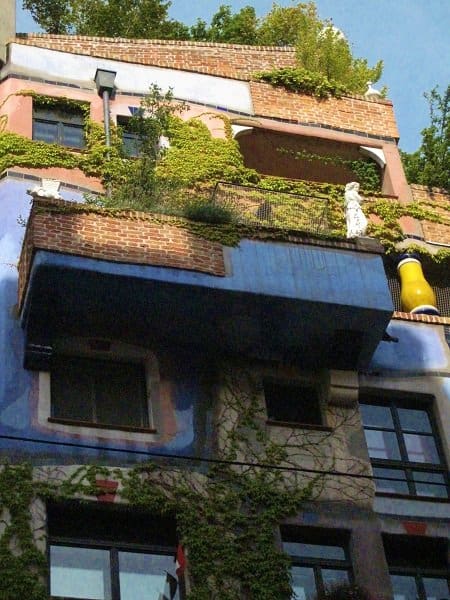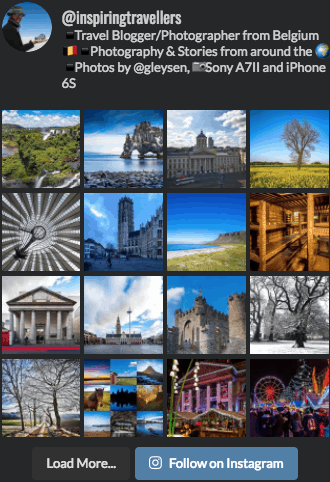Earlier this year we checked out the world’s most beautiful public toilets in the little town of Kawakawa, New Zealand. Their creator was Friedensreich Hundertwasser, a controversial painter, architect and environmentalist who began his life in Vienna. We were naturally drawn to the museum he built there, KunstHausWien.
The building itself is interesting, “A house of beauty barriers, a place of not regulated irregularities, in which you have a good conscience towards nature,” according to Hundertwasser. Designed by the artist and architect Peter Pelikan, it housed the Thonet furniture factory before being turned into a museum. With uneven floors, vibrant colours and his characteristic pillars and tiling work, this is the only museum in the world devoted exclusively to him.
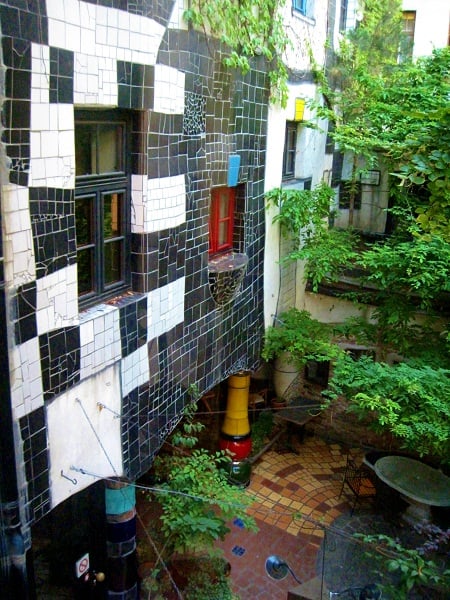
The rear exterior of KunstHausWien where visitors can relax in the cafe. Photos were not allowed inside the exhibitions.
We visited at a good time as both the permanent and special Jubilee exhibition, ‘Hundertwasser – The Art of the Green Path’ were on display. Hundertwasser was prolific, evidenced by the number of paintings, ideas, graphic works and architectural models on display. The regular exhibition features mostly paintings and applied arts while the special exhibition takes visitors on a journey through the mind and lifestyle of the artist as he tackled the endless challenges between man and nature.
Hundertwasser was committed to the pursuit of achieving peace between nature and humanity. He created many pieces aimed to promote awareness of global environmental issues such as water conservation. He designed the humus toilet and was obsessed with improving the relationship between people and their environments.
While his paintings and graphics are strange, thoroughly modern works featuring bright coloured faces, figures and buildings most often created out of spirals, his architectural works are the most interesting for me. He designed a number of buildings in response to the typical buildings he saw around him, which he claimed were the “source of human misery.” On display are models of a Vienna incinerator and a housing complex, both unique and artistic in design.
Hundertwasser was a fellow nomad. He travelled and lived all over the world with Vienna, Paris, Hamburg, Venice, Japan and New Zealand having special significance in his life. Each work of art notes the place of creation and we enjoyed seeing all the different places where he’d worked almost as much as the pieces of art themselves. The top floor of KunstHausWien features a forested grass roof and his last apartment in Vienna. Unfortunately that part of the house is closed to the public.
The artist was not popular with everyone. Throughout his life his work, teaching and viewpoints were controversial and some people still have strong opinions about it today. One entry in the vistor comments log was vehemently opposed, saying that Hundertwasser was “possibly insane” and his suggestion for how to improve the museum was to “demolish it.”
After touring the museum we took a left out the front door and walked a few blocks to Hundertwasserhaus, the public apartments he built with Pelikan and architect Joseph Krawina in the mid ’80s. Like KunstHausWien, the building features undulating floors, a grass-topped roof, 52 apartments, four offices, 16 private terraces, three communal terraces and 250 trees and bushes, with some of the large trees growing from inside the rooms. Hundertwasser did not accept a commission for its design, apparently because he didn’t want anything “ugly” to be built in its place. That, he said, was payment enough.
I highly recommend a visit to the KunstHausWien and Hundertwasserhaus to learn more about this fascinating artist. The special ‘Hundertwasser – The Art of the Green Path’ exhibition runs from 7 July – 6 November 2011.
Getting there: Take the U1 or U4 to Schwedenplatz and then tram line 1 or take the U3 to Landstrasse Wien Mitte and then tram line O to Radetzkyplatz and walk 100 metres. Open daily 10am – 7pm. Regular admission €9 (€4.50 on Mondays, except holidays), combination ticket €10. Guided tours of the temporary exhibition are Sundays and holidays at 3pm and the permanent exhibition Sundays and holidays at 12pm and by appointment. The museum continuously hosts international temporary exhibitions by a variety of artists.
Later this year it will feature the photographs of Henri Cartier-Bresson, specifically from his journeys to India, Russia and the United States during the Cold War era of the 1940s to the 1980s (16 November 2011 – 26 February 2012).
KunstHausWien
Untere Weissgerberstr. 13
www.kunsthauswien.com
What do you think of Hundertwasser’s work?
You may also enjoy these similar posts:
- 468shares
- Share on Facebook
- Pinterest418
- Tumblr
- Evernote
